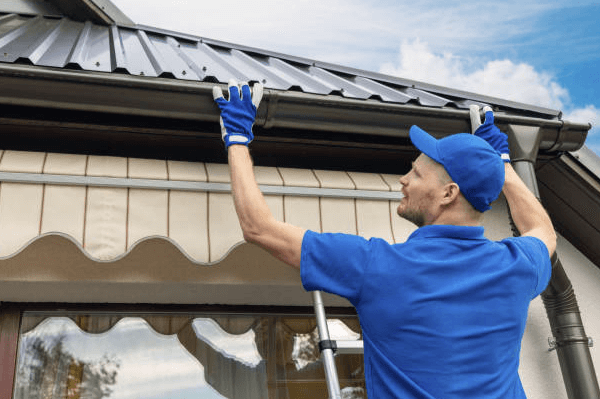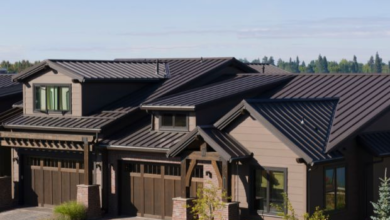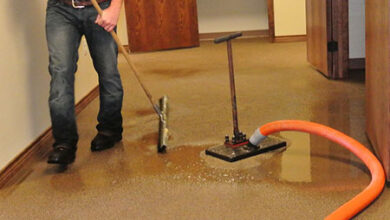What Are Common Issues with Roof Drip Edges?

The drip edge on a roof is a critical yet often overlooked component of a roofing system. This small metal strip is installed along the edges of a roof to direct water away from the structure, preventing damage to the roof, fascia, and foundation. While it may seem like a minor detail, a properly installed drip edge can make all the difference in protecting your home from water infiltration, rot, and erosion. However, like any roofing element, the drip edge is not immune to issues. Over time, several common problems can arise, especially if the installation is faulty or the roof experiences significant wear and tear.
In this article, we’ll explore the common issues with drip edge on a roof, why they happen, and how to address them to ensure that your home remains protected.
1. Improper Installation
One of the most common issues with a drip edge on a roof is improper installation. The drip edge must be installed correctly for it to function as intended. If it is not positioned properly along the roofline, it can lead to water flow problems, leaks, and other water damage. Some of the most frequent installation mistakes include:
– Not extending far enough: The drip edge should extend slightly beyond the edge of the roof to ensure that water flows off the roof and into the gutters, not down the fascia or siding. If the drip edge is cut too short or improperly aligned, water can pool and seep into areas where it shouldn’t, leading to fascia and soffit damage.
– Underlapping with shingles: The drip edge should be placed underneath the shingles on the eaves and over the shingles on the rakes (sides of the roof). If installed incorrectly, such as over the shingles, water can be funneled directly under the shingles, which may cause leaks and rotting in the underlayment or decking.
– Incorrect overlap of sections: In some cases, the drip edge is installed in sections. If the sections are not overlapped properly, there will be gaps where water can get through, defeating the purpose of the drip edge entirely.
To avoid these issues, it’s essential to hire an experienced roofing professional who knows how to install the drip edge on a roof according to manufacturer guidelines and industry standards.
2. Rust and Corrosion
Another issue with drip edge on a roof is rust and corrosion. Drip edges are often made from materials like aluminum, galvanized steel, or copper. While these materials are durable, they are not immune to wear, especially when exposed to harsh weather conditions for extended periods.
Rust can form on a metal drip edge if it’s made of steel or other rust-prone metals. This typically happens if the protective coating is damaged or if the material is exposed to constant moisture. Once the metal begins to rust, it weakens the drip edge, causing it to deteriorate over time. In severe cases, rust can cause holes or cracks in the drip edge, allowing water to seep through.
To prevent rust, homeowners should choose drip edges made from rust-resistant materials, such as aluminum, which is more resistant to corrosion. Regular inspections can also help catch early signs of damage before it becomes a bigger issue. If the drip edge is showing signs of rust or corrosion, it should be replaced promptly to maintain the integrity of the roof.
3. Improper Sizing or Material
Sometimes, the drip edge on a roof may not be the right size or material for the specific roofing system. If the drip edge is too small or thin, it may not provide adequate protection against water runoff. This can result in water flowing over the edge of the roof, running down the fascia, and causing rot or mold growth in the structure. Additionally, a drip edge made from inferior materials may not withstand the weight of snow, ice, or heavy rainfall, leading to bending or damage over time.
Homeowners should ensure that the drip edge is compatible with their roofing material and climate. For example, homes in areas with heavy rainfall or snow accumulation should have a more robust drip edge made of durable materials like aluminum or galvanized steel. It’s also essential that the drip edge is the correct width and thickness to accommodate the specific roof design.
4. Clogging and Debris Build-Up
While the drip edge on a roof is designed to direct water into the gutters, it can become clogged with debris such as leaves, twigs, dirt, or even shingle granules over time. If the drip edge is not cleared regularly, the debris can prevent proper water flow, causing water to pool around the roofline. This can lead to water damage, rot in the fascia or soffit, or the development of leaks.
A clogged drip edge can also cause the gutters to overflow, as the water that should be flowing into them is redirected into areas where it shouldn’t be. To avoid this, homeowners should routinely inspect the drip edge and gutters for debris, especially in the fall when leaves are more likely to accumulate. Regular cleaning of the drip edge will help maintain proper water drainage and protect your home from water damage.
5. Damage from Extreme Weather
Extreme weather conditions can also cause issues with the drip edge on a roof. In areas that experience strong winds, hail, or heavy snow, the drip edge may become bent, torn, or displaced from its original position. This is particularly common with poorly installed or older drip edges that are not securely fastened to the roof. When the drip edge is compromised by severe weather, it can allow water to seep underneath the shingles, causing leaks and water damage inside the home.
In regions prone to high winds, hurricanes, or ice storms, it’s crucial to ensure that the drip edge is securely attached to the roof and made from high-quality, weather-resistant materials. It may also be worth considering reinforcing the drip edge during roof maintenance to prevent damage from future storms.
6. Sagging or Pulling Away from the Roof
Over time, the drip edge on a roof can start to sag or pull away from the roof due to wear, shifting in the structure, or damage from impact. When this happens, the drip edge no longer performs its intended function of directing water away from the fascia and gutters. Instead, water can flow underneath the shingles and into the roof deck, which can lead to leaks and long-term water damage.
If you notice that your drip edge has pulled away or is sagging, it’s important to have it inspected and repaired by a roofing professional. Properly secured drip edges are essential to ensuring that water is properly channeled away from your home’s foundation and siding.
Read also: Looking To Refresh Your Home? 3 Projects To Consider
Conclusion
The drip edge on a roof may be a small part of the roofing system, but its importance cannot be overstated. When it functions properly, it protects your roof, fascia, and foundation from water damage. However, when issues arise—such as improper installation, rust, clogging, or damage from weather—these problems can compromise the entire roofing system and lead to costly repairs. By understanding the common issues with drip edges and performing regular maintenance and inspections, homeowners can ensure their roofs remain in top condition, protecting both their home and investment for years to come. If you encounter any issues with your drip edge, it’s best to consult a professional roofer to resolve them promptly.




